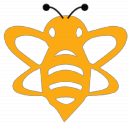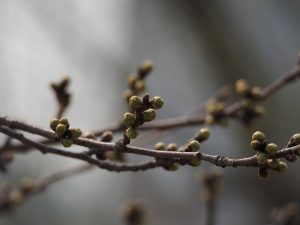Honey Bee Haven
The Black Bee Experience

Honey Bee Haven
The Black Bee Experience
Can Trees and log piles help save Honeybees?
It’s easy to forget that bees are actually forest dwellers and evolved to live within the forest. In fact giving bees bits of wood is probably as important as giving them flowers to preserve their future.
Trees, and their produce, play a vital role in the life of a bee.
Obviously, many trees produce flowers, which offer pollen and nectar to bees (basically bee food). In fact it has been noted that 5 – 6 decent sized trees can produce as much nectar as an acre of wild flowers, which makes them a very viable food source for honeybees.
Trees – the pharmacy of the bee world
Bees have a poor immune system. In fact, bees almost solely rely on cleaning each other and medication brought in from outside the hive in order to keep themselves healthy.
This medication has a name – Propolis.

Propolis is created by trees, usually for new buds and when a tree has been damaged. It has very strong antibacterial qualities and was used by several ancient societies for the treatment of ulcers, mouth infections, colds and even bad breath.
In fact for many years Propolis was far more expensive than honey, such was it’s value.
Bees know the medicinal value of Propolis and will actively seek it out and bring it back to the hive when they need it.
Interestingly they don’t only use it for it’s medicinal qualities. Amongst beekeepers it is known as ‘bee-glue’ as bees use it to fix small holes in their hives (the word actually means ‘suburb’ in ancient greek – probably indicating a bees desire to extend it’s hive with it). They also use it to protect the hive from infection from ‘outsiders’ .
Many Beekeepers will tell you stories of mice that have entered the hives over winter to hibernate in the warmth, only to be mummified with propolis by the bees inside
That would be pretty amazing is that’s all there was trees had to offer. But it isn’t.
A simple log pile could help save Honeybees
Recent discoveries made in America by Paul Stamets indicate that Bees feed on the foot of mycelium, a naturally occurring fungi. The Bees that do feed on it live for longer and have stronger, it also seems to act as a natural pesticide against Varroa, which is a bug causing bees a lot of health issues at the moment.
It turns out (after chatting to the folks at British Mycological Society) that many of these mycelium are found in piles of rotting wood. It fact these don’t even need to be log piles – they can be chippings or even sawdust.

There is an extra advantage to having log piles, or even piles of wood chippings – moss. Moss acts as a wonderful container for water. Not huge volumes, but on it’s surface it can hold enough water to be of use to a beehive (bees have a habit of drowning in a pond if there’s nowhere to stand).
So what are you waiting for. Creating a log pile is an extremely easy thing to do, and very helpful to honeybees. If you want to go the extra mile then why not plant some fruit trees, or maybe a dwarf willow or birch tree, both are excellent for bees or all types – and other wildlife into the bargain.